Ben Zhang
Extracting Events Like Code: A Multi-Agent Programming Framework for Zero-Shot Event Extraction
Nov 17, 2025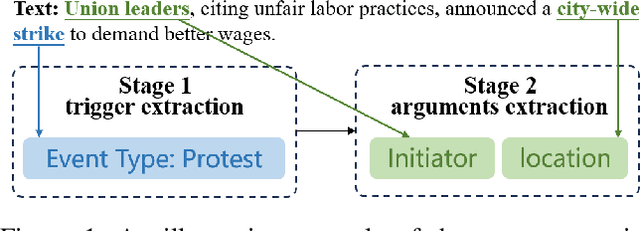
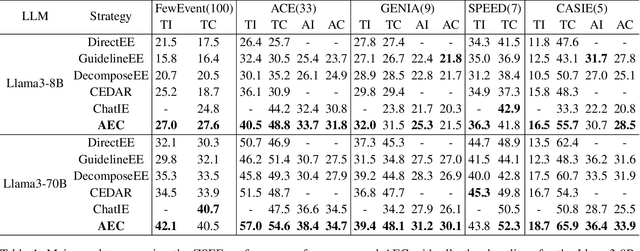
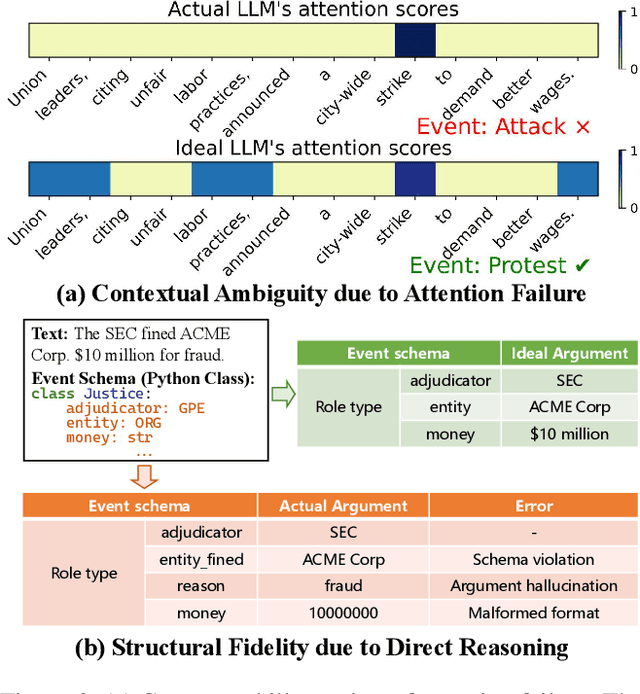
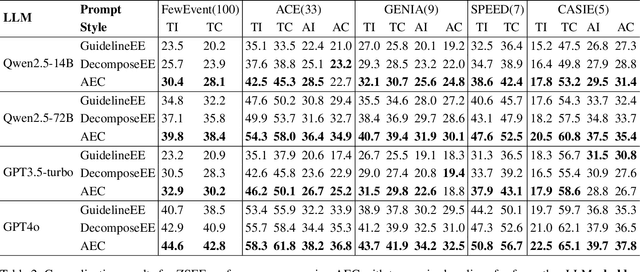
Abstract:Zero-shot event extraction (ZSEE) remains a significant challenge for large language models (LLMs) due to the need for complex reasoning and domain-specific understanding. Direct prompting often yields incomplete or structurally invalid outputs--such as misclassified triggers, missing arguments, and schema violations. To address these limitations, we present Agent-Event-Coder (AEC), a novel multi-agent framework that treats event extraction like software engineering: as a structured, iterative code-generation process. AEC decomposes ZSEE into specialized subtasks--retrieval, planning, coding, and verification--each handled by a dedicated LLM agent. Event schemas are represented as executable class definitions, enabling deterministic validation and precise feedback via a verification agent. This programming-inspired approach allows for systematic disambiguation and schema enforcement through iterative refinement. By leveraging collaborative agent workflows, AEC enables LLMs to produce precise, complete, and schema-consistent extractions in zero-shot settings. Experiments across five diverse domains and six LLMs demonstrate that AEC consistently outperforms prior zero-shot baselines, showcasing the power of treating event extraction like code generation. The code and data are released on https://github.com/UESTC-GQJ/Agent-Event-Coder.
ViFP: A Framework for Visual False Positive Detection to Enhance Reasoning Reliability in VLMs
Aug 06, 2025Abstract:In visual-language model (VLM) reasoning, false positive(FP) reasoning occurs when a model generates a correct answer but follows an incorrect reasoning path. Existing methods based on specific multi-step reasoning datasets and reinforcement learning strategies, leading to high training costs and limited generalization. In this work, we propose ViFP, a general framework for enhancing visual reasoning reliability. It improves both answer accuracy and reasoning soundness by detecting FPs. ViFP tackles the limitations of dataset dependency and poor generalization by constructing sub-question templates grounded in the core dimensions of visual reasoning, such as object localization, characteristic description, and object discovery. ViFP then builds effective reasoning paths via multi-turn QA to improve reasoning accuracy. Meanwhile, ViFP dynamically analyzes the consistency of reasoning path to identify potential FPs, and introduces a targeted chain-of-thought (CoT) mechanism that adaptively guides both FP and non-FP samples. Thereby reducing logical errors in the reasoning path while preserving accuracy. Finally, we introduce a reliability evaluation metric-VoC, which integrates answer accuracy and the FP rate, providing a quantitative tool to assess whether a VLM not only answers correctly, but also reasons reliably. Our experiments on closed-source VLMs show that ViFP consistently improves performance across three datasets: A-OKVQA, OKVQA, and FVQA. On A-OKVQA, ViFP improves accuracy by up to 5.4%, surpassing the previous state-of-the-art by 4.3%, and significantly reduces the number of FPs, validating its benefits in enhancing reasoning reliability.
Functional Network: A Novel Framework for Interpretability of Deep Neural Networks
May 24, 2022

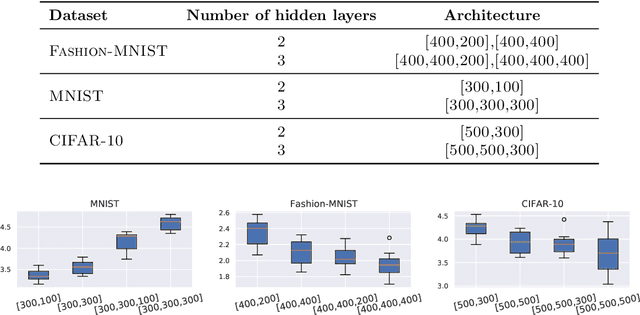
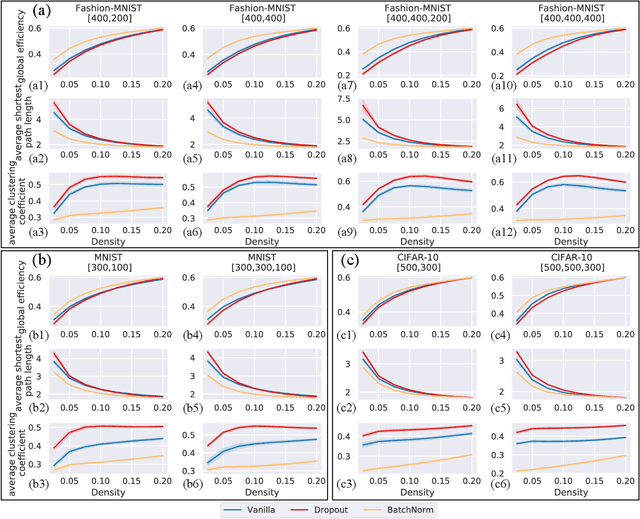
Abstract:The layered structure of deep neural networks hinders the use of numerous analysis tools and thus the development of its interpretability. Inspired by the success of functional brain networks, we propose a novel framework for interpretability of deep neural networks, that is, the functional network. We construct the functional network of fully connected networks and explore its small-worldness. In our experiments, the mechanisms of regularization methods, namely, batch normalization and dropout, are revealed using graph theoretical analysis and topological data analysis. Our empirical analysis shows the following: (1) Batch normalization enhances model performance by increasing the global e ciency and the number of loops but reduces adversarial robustness by lowering the fault tolerance. (2) Dropout improves generalization and robustness of models by improving the functional specialization and fault tolerance. (3) The models with dierent regularizations can be clustered correctly according to their functional topological dierences, re ecting the great potential of the functional network and topological data analysis in interpretability.
An artificial intelligence system for predicting the deterioration of COVID-19 patients in the emergency department
Aug 04, 2020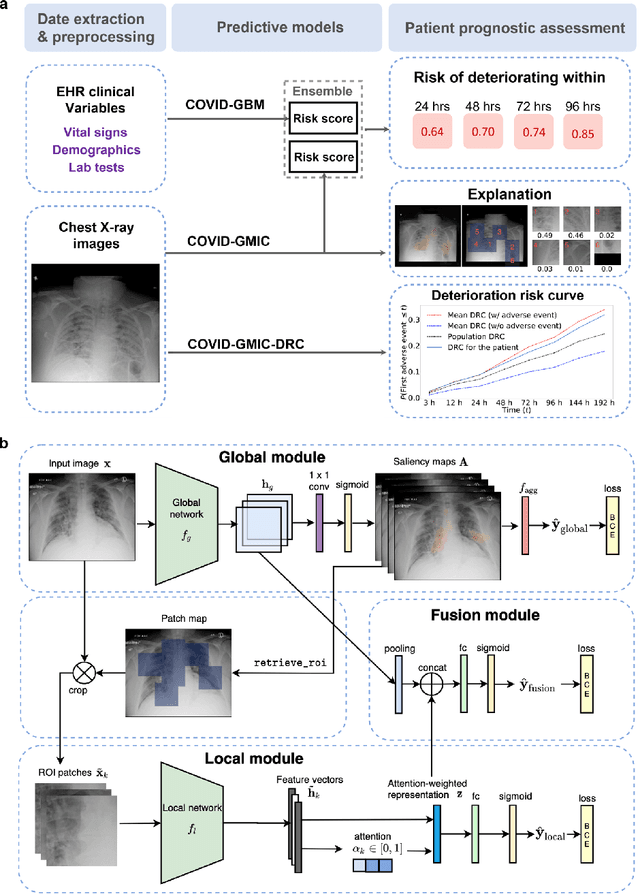
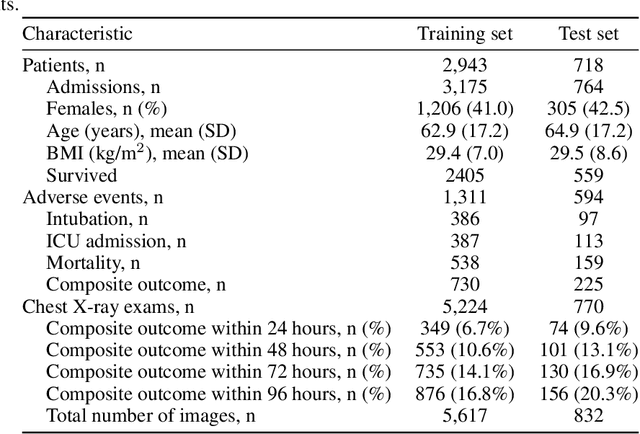
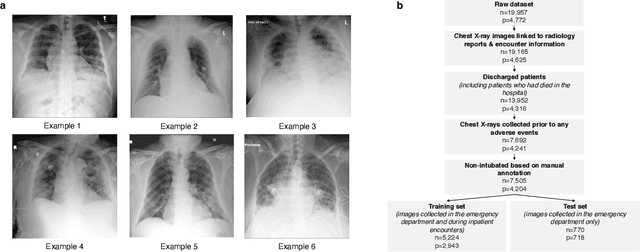
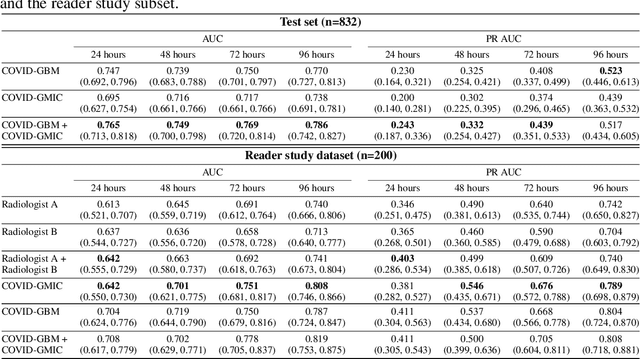
Abstract:During the COVID-19 pandemic, rapid and accurate triage of patients at the emergency department is critical to inform decision-making. We propose a data-driven approach for automatic prediction of deterioration risk using a deep neural network that learns from chest X-ray images, and a gradient boosting model that learns from routine clinical variables. Our AI prognosis system, trained using data from 3,661 patients, achieves an AUC of 0.786 (95% CI: 0.742-0.827) when predicting deterioration within 96 hours. The deep neural network extracts informative areas of chest X-ray images to assist clinicians in interpreting the predictions, and performs comparably to two radiologists in a reader study. In order to verify performance in a real clinical setting, we silently deployed a preliminary version of the deep neural network at NYU Langone Health during the first wave of the pandemic, which produced accurate predictions in real-time. In summary, our findings demonstrate the potential of the proposed system for assisting front-line physicians in the triage of COVID-19 patients.
Reducing Gender Bias in Word-Level Language Models with a Gender-Equalizing Loss Function
Jun 03, 2019
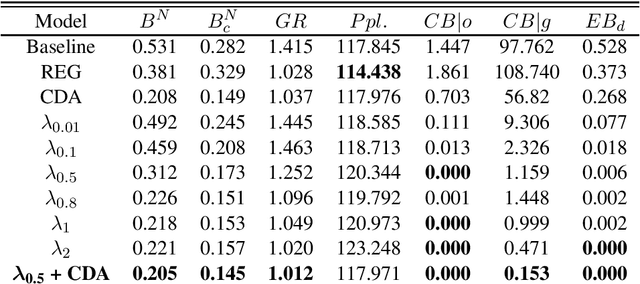
Abstract:Gender bias exists in natural language datasets which neural language models tend to learn, resulting in biased text generation. In this research, we propose a debiasing approach based on the loss function modification. We introduce a new term to the loss function which attempts to equalize the probabilities of male and female words in the output. Using an array of bias evaluation metrics, we provide empirical evidence that our approach successfully mitigates gender bias in language models without increasing perplexity. In comparison to existing debiasing strategies, data augmentation, and word embedding debiasing, our method performs better in several aspects, especially in reducing gender bias in occupation words. Finally, we introduce a combination of data augmentation and our approach, and show that it outperforms existing strategies in all bias evaluation metrics.
 Add to Chrome
Add to Chrome Add to Firefox
Add to Firefox Add to Edge
Add to Edge